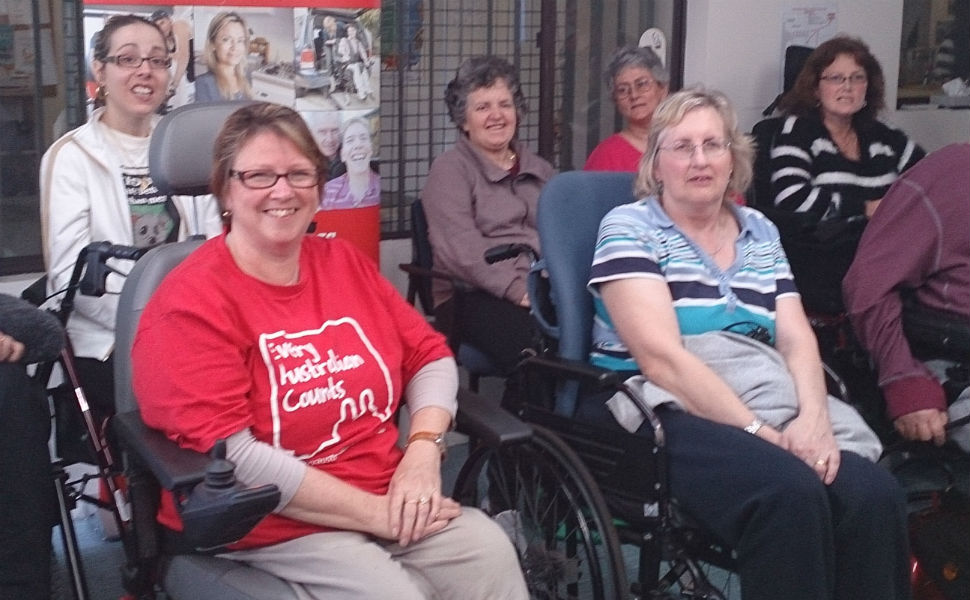Lynn Foreman – a view from the beginning

She was there when it was just a dream, she was there when there was a tough campaign to be won, and now she’s here as a deserving beneficiary as it all kicks off. Meet Lynn Foreman, spritely 50-something, mother, grandmother, great grandmother (yep!) and NDIS user at the trial site in the Barwon (Geelong) area.
“I was one of the Every Australian Counts campaigners who worked so hard to get this scheme up and running,” she says.
“I didn’t think I’d ever get to see it. I actually thought it would be for the next generation because as you know, it can take 40 years to get any new scheme up and running.”
With campaigners with Lynn Foreman’s energy and enthusiasm, it’s little wonder the scheme happened a lot quicker than that. Lynn did whatever it took to help out with the campaign. She did numerous photo shoots and TV and radio appearances. She staffed information booths, and she undertook numerous trips across regional Victoria to speak to MPs and locals about what was then the proposed NDIS scheme.
“You name it, I was there,” she says.
All that travel wasn’t easy for Lynn. She was born with arthrogryposis, a congenital condition where there are multiple joint “contractures” at birth. (A contracture is a limitation in the range of motion of a joint.)
“I’m in a motorised wheelchair these days. My feet are a size three child’s foot. I have no toes and my joints don’t work,” Lynn explains.
Before the NDIS, modifications to her wheelchair could be expensive and she sometimes had to pay out of her own pocket because the old system simply didn’t have the resources. It could often take years to arrange other types of supports she needed.
All that and more has changed now.
“I’m over the moon. I honestly didn’t think I’d see it in my lifetime and what we campaigned for has come true,” Lynn says.
One of the big changes in Lynn Foreman’s life is the simple act of sleeping beside her husband in a special new high-low bed provided through NDIS funding. She can also now afford the orthopaedic shoes she requires, because store shoes don’t fit her feet.
Lynn also has more support worker hours these days. The old regime of 15 or 16 hours has been upped to 27 hours, which makes a huge difference.
“I can do what I can have to now,” Lynn says. “Before I was juggling. I was always asking myself questions like ‘should I get my washing down or have a shower’? Now I can have the coffee and the cake to go with it.”
Lynn’s top tips
Lynn has some really insightful tips for those about to undergo the NDIS planning process. Here are her top 3 tips for how to get started on your NDIS journey:
1. Have an advocate with you
When you first visit a planner, Lynn says it’s really crucial to have somebody with you, whether it’s a carer you’ve worked with, or your partner or even just a friend who knows you well.
“That’s very important because I forget things, simple little things,” she explains. I’m quite articulate so that’s not the problem but to have someone who knows you and your routine really well is very important.”
2. Don’t assume the planners know everything
“For me the planning process took three visits. I found that the planners were learning the ropes as well. Don’t forget it’s a whole new scheme, so don’t assume they know what’s best either.”
3. Bring any and all paperwork
“Don’t throw out any documentation. You still have to prove your disability to your local area coordinator and planner. The best part now is that once you put in those documents you never have to do it again.”
A final word
“NDIS has made a real difference to me,” Lynn says. “I can now live my life the way I want to live my life.”
